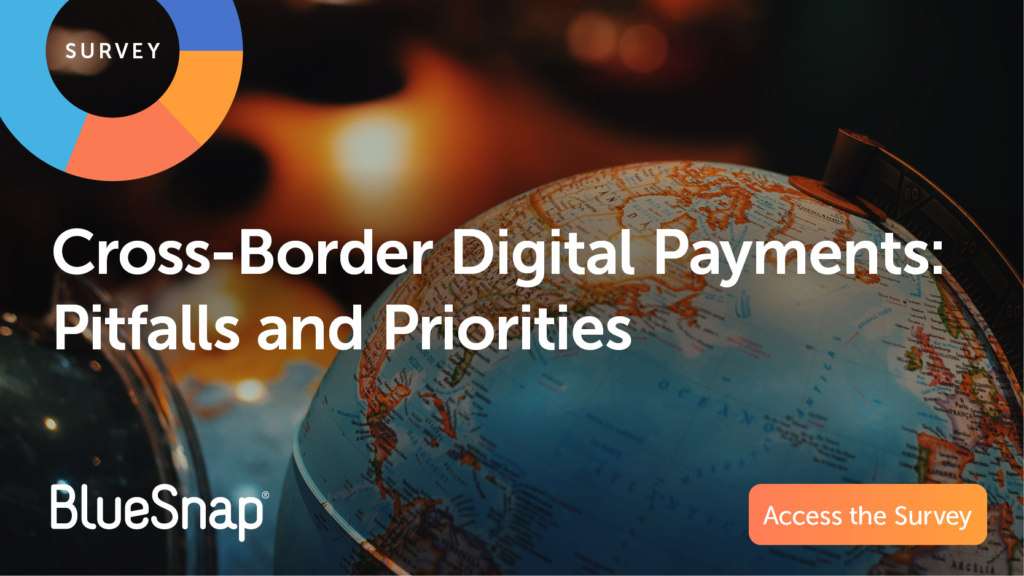In 2021, more than 80% of Americans used digital payments to make browser-based and in-app purchases, but only 53% of Europeans did, according to Digital Commerce 360. With eCommerce and digital payments making selling overseas easier, many businesses in the EU and UK want to take advantage of selling into the US.
While processing cross-border payments creates a lot of opportunities for expansion, they also have some intricacies that businesses will have to navigate and even optimize for in order to get the most out of selling around the world.
The Challenges of Selling Cross-Border
To get the most out of your international sales, it is essential to understand the challenges you’ll encounter, including:
- The Potential for Lost Revenue: Selling into a new country or region is not as simple as attracting the new traffic. Checkout abandonment can be a significant challenge when expanding into international markets. You need to offer a localized payment experience for shoppers with the expected currencies and payment types or you will lose revenue. In 2021, $1B was lost at checkout because shoppers abandoned after not seeing their preferred payment method, according to 451 Research. If you are going to sell into the US, that means you need to offer digital wallets, like Apple Pay and Google Pay, to reduce friction as Americans make so many purchases right on their phone.
- Additional Fees: Selling cross-border can incur up to 2% in additional fees, but many companies do not realize that they may be completely avoidable. For example, if you have a legal entity in the US, you could take advantage of local card acquiring, which would negate these additional fees entirely.
- Tax and Compliance: It is nearly impossible for a company to fully understand the payment tax and compliance needs for every country you want to sell into. And, when considering a country like the US, different states have different tax rates and data regulations to follow. You need to work with a payment solution that has that sort of expertise built in.
And these challenges compound with each new region you want to expand into. It is very common for an organization to have a different payment gateway for every country just to meet the local payment needs, from currencies and payment types to compliance and more. With each gateway comes another set of upkeep for your development team. Beyond updates and maintenance, every time you want to make a change, you have to do it on each gateway. It is a lot of upkeep and leaves little time for development teams to work on more innovative, value-add work.
There Is a Better Way for EU and UK Businesses to Sell Cross-Border
Here are five tips for selling internationally that will help you get the most out of your payments by increasing your revenue and reducing costs:
1. Local Payment Methods & Language: You need to talk to your customers in ways that they understand, and language is just a part of that. Offering local payment methods will ensure that your customers can pay when they want to make a purchase and will significantly reduce checkout abandonment.
2. Local Currencies: Similarly, shoppers will feel more comfortable seeing their local currency and will know exactly what they are paying. According to our data, businesses see up to a 12% increase in revenue just by presenting in shoppers’ local currencies.
3. Local Entity: If you have a local entity in the regions you are selling into, be sure you are leveraging them. By taking advantage of local card acquiring, you can avoid unnecessary cross-border fees and improve your authorization rate.
4. Tax & Compliance: Foreign tax and compliance can trip anyone up, and mistakes can be costly. You need to work with payment experts who can take care of all of this for you.
5. Work with a Single Payment Solution to Help You Sell Cross-Border: Identifying a single payment solution that has all the functionality needed to sell in the regions you want to with the global capabilities and expertise outlined above will free your resources up while helping you increase revenue and reduce costs.
While finding a single solution for global payments may sound too good to be true it isn’t. BlueSnap’s All-in-One Payment Orchestration Platform give you the ability to sell in 200 regions with local acquiring in 47, payment optimization tools, 100+ currencies, 100+ payment types, built-in tax and compliance, and more. No matter how you want your customers to pay – including invoicing, recurring payments and more – and no matter where you accept payment, BlueSnap can support your business today and as you grow.
Related Resources
- [On-Demand] Cross-Border Payments and Coffee
- Strategies for Avoiding the Pitfalls of Cross-Border Selling
- Cross-Border eCommerce Opportunities, Challenges and Trends [Infographic]
Frequently Asked Questions
What are cross-border payments?
Cross-border payments, or cross-border transactions, occur when the acquiring bank and the issuing bank are in different regions. When banks process cross-border payments, they perceive them to be riskier than domestic transactions, leading to higher fees and a greater likelihood of being declined.
What is a cross-border fee?
Processing card payments comes with associated fees. When you process cross-border card payments, additional fees are charged on top of them. These additional cross-border fees are fixed, non-negotiable and set by card networks.
What are the different types of cross-border payments?
Cross-border payments can take any of the same forms as domestic payments, from eWallets and card payments to bank transfers. It’s important to be able to accept all types of payments, including payment types native to particular countries you sell in. That way, customers from around the world find it easy to pay. Shoppers in different countries also have different purchasing habits, such as on mobile vs. laptop. The more you tailor the experience to your customers’ locations and preferences, the more you will sell.
When might a cross-border fee apply?
Whenever someone buys your goods or services using a credit or debit card, you pay a card processing fee. The majority of the fee, which varies by type of card, is the interchange fee. When the customer uses a card issued in a different country or region from where the payment is processed, there may be an additional cost for a cross-border fee that is added on top of the regular interchange fee.
Is there a way to avoid cross-border fees?
Yes, unnecessary cross-border fees and foreign transaction fees can be avoided. When you use a payment provider that can help you process your payments as if they were local with local card acquiring, helping to increase your authorization rates and avoid unnecessary fees.


